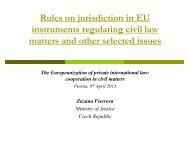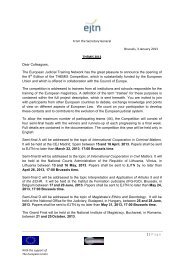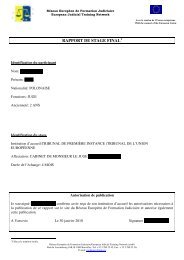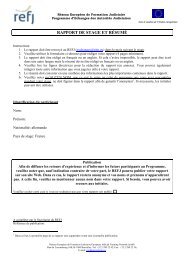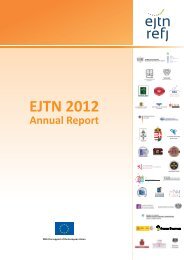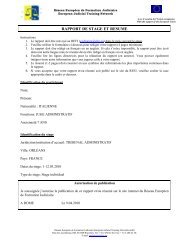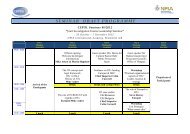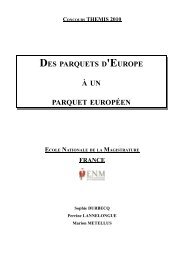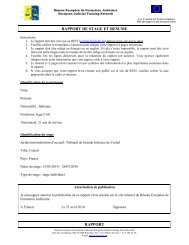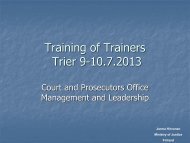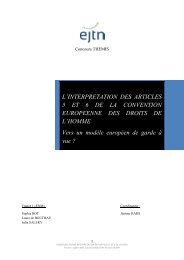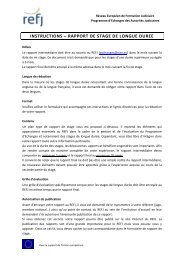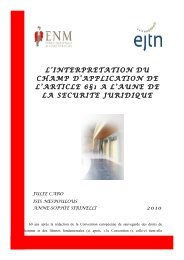European Criminal Justice - EJTN
European Criminal Justice - EJTN
European Criminal Justice - EJTN
- No tags were found...
Create successful ePaper yourself
Turn your PDF publications into a flip-book with our unique Google optimized e-Paper software.
<strong>EJTN</strong> training guideline in <strong>European</strong> <strong>Criminal</strong> <strong>Justice</strong> - Update 2011IV.2. <strong>European</strong> Arrest Warrant (EAW)1. IntroductionThe <strong>European</strong> Arrest Warrant (EAW) has been designed to replace the currentextradition system by requiring each national judicial authority (the executingjudicial authority) to recognise, ipso facto, and with a minimum of formalities,requests for the surrender of a person made by the judicial authority of anothermember state (the issuing judicial authority).As of 1 July 2004, the Framework Decision has therefore replaced the existingtexts, such as:- The 1957 <strong>European</strong> Extradition Convention and the 1978 <strong>European</strong>Convention on the suppression of terrorism as regards extradition- the agreement of 26 May 1989 between 12 member states on simplifying thetransmission of extradition requests- the 1995 Convention on the simplified extradition procedure- the 1996 Convention on extradition.The <strong>European</strong> Arrest Warrant only applies within the territory of the EU.Relations with third countries are still governed by extradition rules.The Framework Decision defines the "<strong>European</strong> Arrest Warrant" as any judicialdecision issued by a member state with a view to the arrest or surrender byanother member state of a requested person, for the purposes of: conducting acriminal prosecution; executing a custodial sentence; executing a detentionorder. The warrant applies where a final sentence of imprisonment or adetention order has been imposed for a period of at least four months; foroffences punishable by imprisonment or a detention order for a maximumperiod of at least one year. In June 2008, the Council published a handbook onthe practicalities of executing an EAW. In 2010, a revised version of the EAWhandbook has been published. Furthermore, several evaluation reports on thepractical application of the EAW in the Member States are available. On 11 April2011, the Commission published its third report on the implementation of theCouncil Framework Decision on the EAW. Although since its coming-into-forceon 1 January 2004, available statistics contrast favourably with the pre-EAWposition (e.g. the average surrender time has dropped from a one-year averageto an average of 14-17 days for requested persons that did consent to theirsurrender, and to 48 days for those surrendered without consent), the latestCommission report also reacts to the rising concerns in relation to the operationof the EAW and in particular its effects on fundamental rights.Training contentTraining on the EAW should cover:1. The main principles of the Council’s Framework Decision of June 13th,20022. Scope and fields of application27



